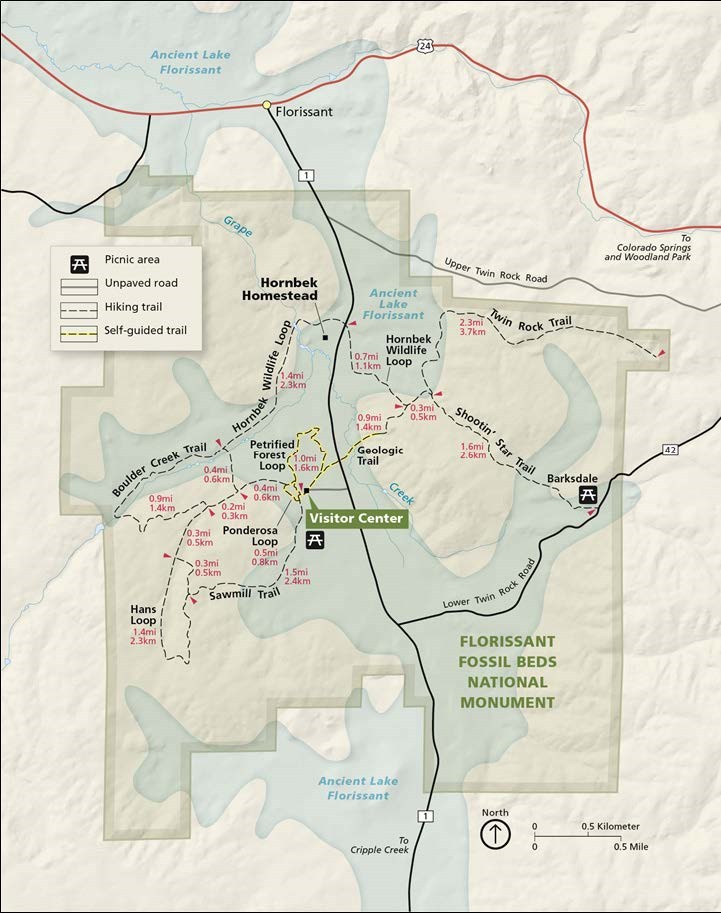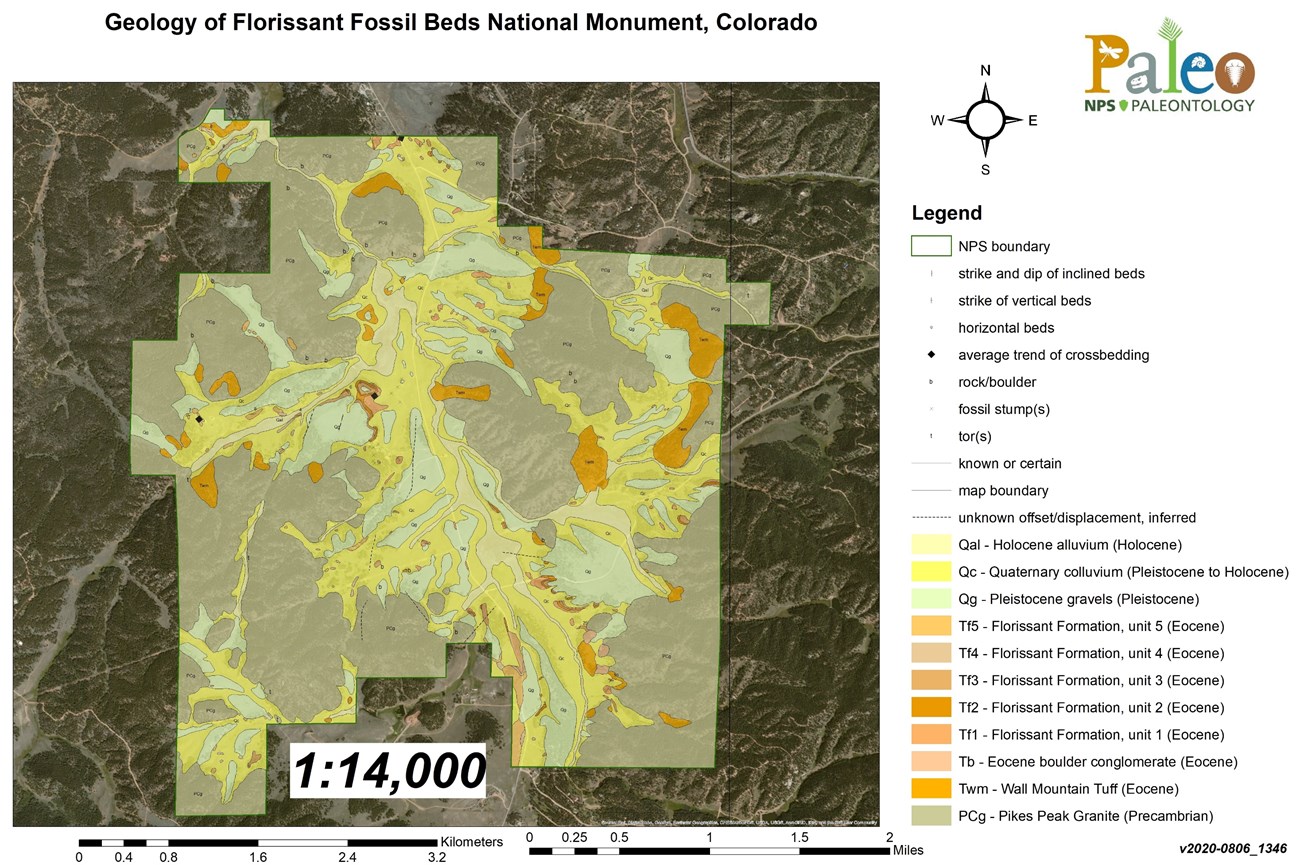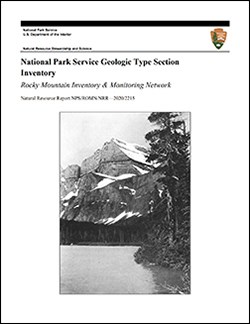Last updated: December 28, 2022
Article
Stratotype Inventory—Florissant Fossil Beds National Monument, Colorado
Introduction
Florissant Fossil Beds National Monument (FLFO) is located in central Colorado and was established August 20, 1969 to preserve one of the richest and most diverse fossil deposits in the world. FLFO encompasses 2,427 hectares (5,998 acres) of land that have yielded spectacular fossils of finely preserved insects, spiders, beetles, ants, dragonflies, butterflies, flies, fish, plants, ferns, leaves, pollen, flowers, mammals, and birds, as well as redwood stumps up to 4.3 m (14 ft) wide. Significant research of FLFO includes the study and interpretation of more than 40,000 fossil specimens from a 34-million-year-old Eocene ecosystem which furnishes critical evidence of biologic and climatic change during a period of tectonic uplift (KellerLynn 2006).

NPS image
Significance and Geologic Resource Values
The geologic story of FLFO is intimately linked to the existence of the rare and delicate fossil specimens which are completely absent or extremely rare in most paleontological sites. Strata of the Florissant valley were deposited on the eroded surface of the Precambrian-age Pikes Peak Granite, dated at 1.08 billion years old (Wobus 2001). Geologic units consist of lava flows, massive pumiceous tuffs, river gravels, agglomerates, and finely laminated, fossiliferous paper shales which form the most prominent outcrops (Figure 6). The Florissant Formation was deposited within a valley that was episodically blocked by volcanic debris flows (lahar deposits) that dammed the streams and formed Lake Florissant (KellerLynn 2006). Evanoff et al. (2001) interpreted the Florissant Formation as probably recording two episodes of lake generation: the first represented by the lower shale unit; the second represented by the middle and upper shale units, which are divided by a caprock conglomerate unit throughout most of FLFO. The lacustrine deposits were eventually buried by pumice gravel and lahars from the Thirtynine Mile volcanic field.

NPS image.
Stratotypes in Florissant Fossil Beds
As of the writing of this paper, there are no designated type formations identified within the boundaries of FLFO. The Florissant Formation of FLFO deserves stratotype designation. A list of stratotypes located within 48 km (30 mi) of park boundaries is included here for reference. These nearby stratotypes include:
- Cambrian–Ordovician Manitou Limestone (type section)
- Ordovician Harding Sandstone (type locality)
- Eocene Wall Mountain Tuff (type locality)
- Oligocene Antero Formation (type area)
Type Section Inventory Report—Rocky Mountain Inventory & Monitoring Network

The information on this page is excerpted from a report covering six parks within the Rocky Mountain Inventory and Monitoring Network (ROMN):
- Florissant Fossil Beds National Monument, Colorado
- Glacier National Park, Montana
- Grant-Kohrs Ranch National Historic Site, Montana
- Great Sand Dunes National Park and Preserve, Colorado
- Little Bighorn Battlefield National Monument, Montana
- Rocky Mountain National Park, Colorado
The full Network report is available in digital format from https://irma.nps.gov/DataStore/Reference/Profile/2283702
Please cite this publication as:
- Henderson, T., V. L. Santucci, T. Connors, and J. S. Tweet. 2020. National Park Service geologic type section inventory: Rocky Mountain Inventory & Monitoring Network. Natural Resource Report NPS/ROMN/NRR—2020/2215. National Park Service, Fort Collins, Colorado.
Geodiversity Atlas—Rocky Mountain Network Index
Leave No Trace—Protect Type Sections for Science

Many type sections and paleontological sites are vunerable to damage from careless visitation and over-use. Be sure to practice Leave No Trace princples whenever you are in the outdoors. Of particular importance at geoheritage sites is to:
-
Travel and camp on durable surfaces, and
-
Leave what you find.
If you see signs of vandalism or someone acting inappropriately during your visit to a park site, please contact a ranger at the park or make a report through NPS Investigative Services.
Related Links
- Florissant Fossil Beds National Monument, Colorado—[Geodiversity Atlas] [Park Home]
- Geologic Time Scale
- America's Geoheritage
- NPS Paleontological Resource Inventory
- NPS Geologic Resources Inventory
- NPS Geodiversity Atlas
